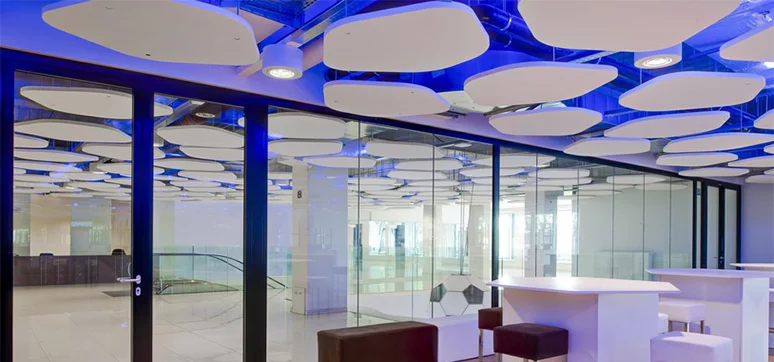What are the common causes of building fires?
Electricity is by far the most common cause of fire outbreaks as it happens quickly, and unexpectedly & is often related to ignorance. The second most common cause of fire outbreaks could be human errors. Burning candles that are forgotten, the forgotten pot on the stove, smoking indoors – human error is responsible for many fires in commercial and residential spaces. Overheating and Arson are some other causes of fire.
Please throw some light on the reaction of various façade/fenestration materials to fire.
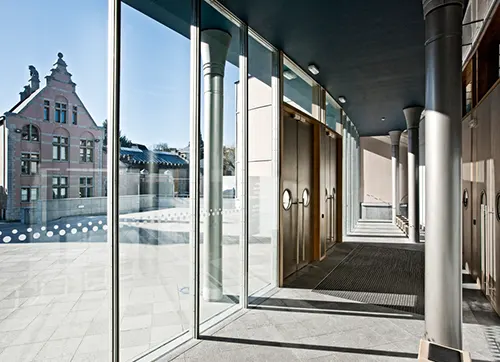
The reaction of façade/fenestration to fire is its contribution to a fire to which it is exposed through its decomposition. It is concerned with the combustibility and ignitability of building materials, and it can be used to calculate how much energy they contribute to the spread of a fire. EN 13501-1: 2018 provides reaction to fire classification procedure for all construction products including products incorporated within building elements. Fire reaction tests like – Non-Combustibility Tests, Heat of Combustion Tests, Burning Item Tests, Radiant Panel Tests (for flooring), and Single Flame Source Tests, are performed alone or in combination to comply with standards.
What are the parameters which define the performance of a fire retardant façade/fenestrations?
Various factors like fire resistance performance, light transmission, impact resistance, u value, sound reduction & solar factor help to define the fire resistance requirement of façade/fenestration.
What are the aspects to consider while designing and installing fireproof or fire-resistant facades and fenestrations?
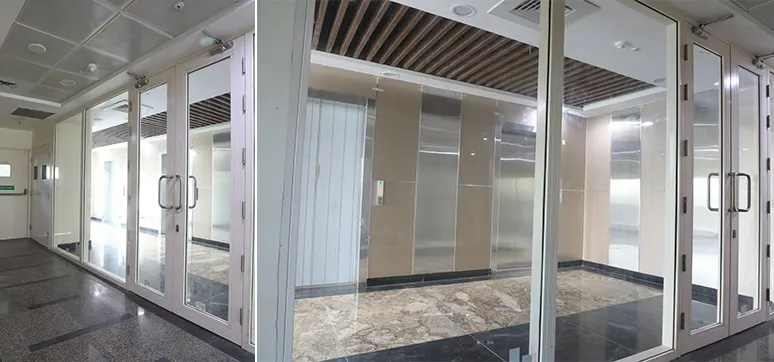
The selection of the right kind of material is an important aspect to be considered while designing the building. The material surface that is categorized as Class 1 has very low flame spread and is ideal for fire-resistant façade and fenestration.
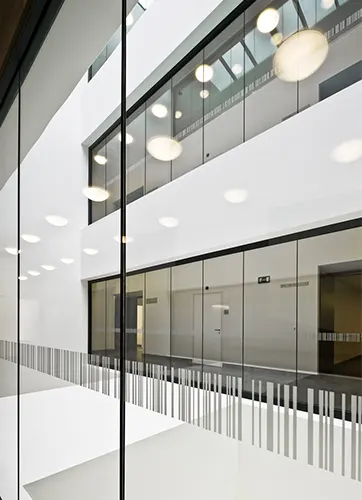
Tell us about fire-resistant materials that can be used on facades/ fenestrations.
Fire resistance glass installed in steel façade/ fenestration system, glass façade installed along with sprinkler system that provides full coverage to the glass meets the fire resistance criteria specified in NBC2016, Part 4, Life & Safety Chapter.
How can glass be a fire-resistant material? How does an interlayered toughened fire glass work?
Float-processed glass has a softening point at 600-640°C. In the case of interlayer toughened fire-resistant glass, glass on the fire-exposed side starts transforming into the plastic stage as soon as the temperature increases beyond 600°C, which happens in 4-5 Min & the interlayer gets exposed to fire. This interlayer forms a solid structure & withholds outside the glass for the specified time limit. In this event, transparent FRG becomes opaque, and the change in the appearance of the glass is an indication of fire on another side. This psychologically helps to reduce panic happening during the evacuation process.
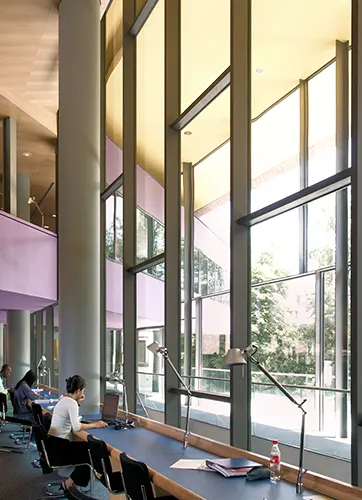
AIS Pyrobel-T fire-resistant glass which is made of gel-filled tempered glass technology helps to provide protection for up to 2 Hours for integrity & 30 minutes of insulation. Apart from this, it also helps to restrict heat radiation up to 15 KW/Sq m for 2 hours which provides sufficient time for occupants to get evacuated.
Explain active and passive systems for fireproof facades/fenestrations. How can we prevent fire spread?
Active fire protection includes all defensive measures and represents the overall system for detecting and extinguishing fires (fire alarms, sprinkler systems, fire extinguishers). In contrast to active fire protection, passive fire protection plays a preventive role by breaking buildings into ‘compartments’ and preventing the spread of fire through the use of fire-resistance-rated walls & floors made up of calcium silicate board or glass. Fire-resistant glasses could help in providing passive fire protection while they also contribute to improving the aesthetics of the building. The selection of the right combination of passive & active fire protection is governed by regulations relating to the nature and use of a building.
What is the need for fire rating requirements for the façade/doors/ windows and the exterior wall systems?
Fire resistance partition with windows & doors helps to provide passive fire protection to the occupants in the building thereby providing sufficient time for evacuation during the fire incident. The fire resistance system in the lift lobby area helps to restrict the internal transfer of flame & smoke to other floors happening through a lift duct. A fire-resistant exterior wall system helps to restrict the transfer of flames and smoke to either enter or exit the building or from one floor to the other from the outside.
What are the standards used for grading fire-resistant materials including glass, ACP, uPVC etc.? Is there any fire testing done on the products?
uPVC and aluminium frames are not suitable for fire-resistant façade & fenestration applications as they have low melting points. In some parts of the world, for fire resistance insulated aluminium frames are used, but they are limited to providing fire resistance for up to 60 minutes. Moreover, these traditional materials are not capable of providing 2 hours of fire resistance requirements as specified in NBC 2016. In India, steel frames are the most popular for fenestration applications.
